Monday
Featured Stories49th Day Commemoration for Quake Victims
By Lyndon Comstock
For the thousands of people who perished in the recent earthquake in Tibet this coming Wednesday, June 2 is the 49th day after their death. Traditionally, this day represents the culmination of the period of compassionate meditations on behalf of the deceased. Please consider including these children, women, and men in your thoughts, prayers, and practices. If you wish to devote a particular practice to them, a suggestion is to recite the Heart Sutra and repeat the mantra 108 times.
Recalling Those Who Perished
On the morning of April 14, 2010, an earthquake of approximately 7 magnitude suddenly struck a region of the heartland of Kham—eastern Tibet—which includes the city of Jyekundo (Yushu). Eyewitnesses describe the shaking as having been so violent that they were thrown to the floor. All of those who could do so dashed outside. Many thousands of those who were caught indoors could not escape, as walls and roofs came crashing down about them.
Most of the buildings in Jyekundo were constructed from either unreinforced cinderblock or logs and earth; neither type can withstand a strong earthquake. An estimated 80-90% of the buildings in Jyekundo, a city of 100,000 people, collapsed or were utterly ruined. In some nearby villages, all of the structures collapsed. In the space of twenty or thirty seconds, the city of Jyekundo and all nearby villages were largely reduced to rubble.
Those who were crushed or hopelessly trapped in the imploding buildings suffered the difficult karma of dying without final preparations or saying goodbye to their families. One feels special sadness for the many children who died suddenly in schools or were injured and could not be rescued.
Jyekundo, whose population is 98% Tibetan, is a pivotal city in the history, culture, and commerce of its region. A trading center for many centuries, it is the closest city to the Surmang monasteries, and to many other major Kagyu, Nyingma, and Sakya monasteries. Of the monasteries in the earthquake zone, Thrangu monastery, Thrangu Tashi Choling, was the hardest hit. With the exception of their main lhakang, most of the buildings at that monastery collapsed and a number of monks were killed.
View photos of the earthquake aftermath in Jyekundo and at Thrangu Tashi Choling; read about the damage to the Munsel School.
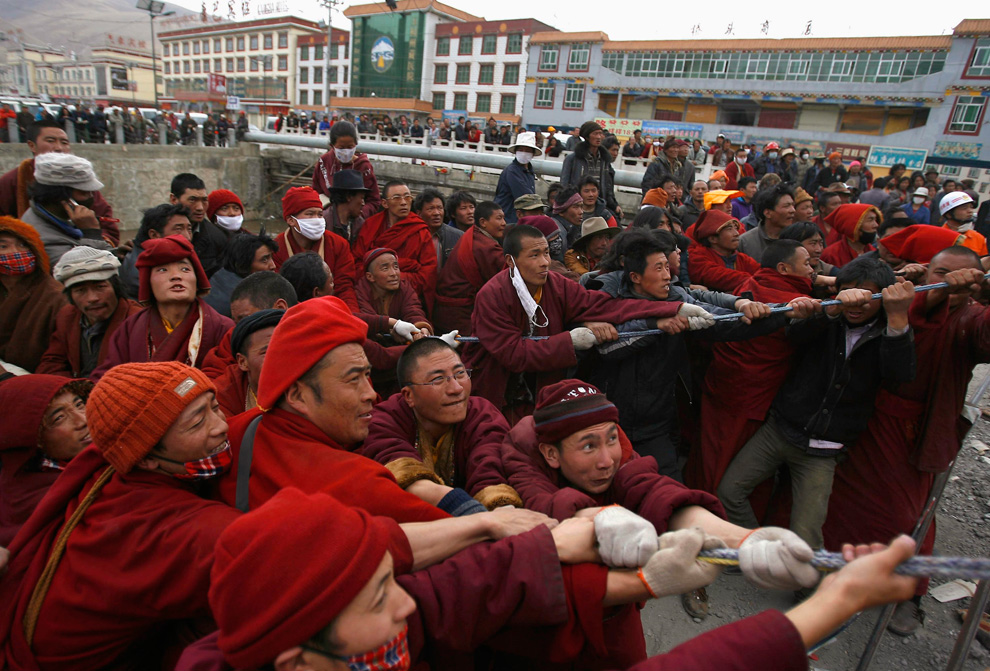
Monks and nuns poured into the city from the surrounding areas to work alongside the local population, searching the ruins for the dead and the living.
The Bodhisattvas of Jyekundo
Rescue efforts started almost immediately, as people began to dig for those who were buried. At first, this was a family-by-family effort, as the shocked survivors tried to excavate their children or parents or neighbors. However, within the first day, there were large numbers of people digging in teams. Many of these were monks from nearby monasteries, who rushed to Jyekundo by the hundreds, and eventually thousands. The Chinese government sent thousands of army search and rescue personnel within 24 hours of the earthquake.
An estimated 15,000 people were injured in the earthquake. Most of these people had to be extricated from fallen buildings before they could receive any treatment.
All medical facilities, as well as all government services, in Jyekundo were knocked out by the earthquake. Impromptu triage centers were set up on several streets, notably on the largest bridge in the center of the city. This also became a sidewalk mortuary, as many of those brought there were already dead or soon died. A number of doctors and nurses went on their own initiative to these sidewalk locations and began treating the wounded as best they could even though they initially had no supplies.
All types of vehicles, including trucks and cars, were pressed into service to carry severely injured persons elsewhere for medical care. The closest city of any size to Jyekundo is Xining, which is more than 500 miles by two lane road. More than a thousand vehicles departed for Xining in the first several hours after the earthquake, carrying injured people. A small airport had opened south of Jyekundo in 2009. The Chinese army soon sent a team to operate the airport and was able to also begin evacuation of the injured by plane within a day or two of the earthquake.
Rescue efforts were complicated by a series of aftershocks in the days after the earthquake, including at least two of magnitude 6 or more.
Due to its altitude of more than 12,000 feet, mid-April is still winter in Jyekundo. Some snow fell in the days after the earthquake. No one in the city or the surrounding area was able to live indoors after the quake; many had escaped with only the clothes on their backs. Food, shelter, and clothing became immediate survival necessities.
The monks and nuns who came into the city immediately stepped in to help, especially in the first days before the government was able to bring in significant supplies from other regions. They passed out tea and food and helped families organize some minimal shelter from whatever tarps or lumber could be salvaged until government tents arrived. Some monasteries sent large kettles from their kitchens so that tea or food could be prepared on scrapwood fires in the streets.
Of great importance to the local people, the monastics also began doing special buddhist practices for the dead, such as phowa, and eventually organized cremations.
Read more about the contribution of monks to relief efforts in Jyekundo: Joining in the Bodhisattva Activity in Jyekundo and Thousands of Monks in Jyekundo for Relief Efforts.

The Twelfth Trungpa Rinpoche, Aten Rinpoche and others from the Surmang Dutsi-Til monastery during a funeral puja conducted in the midst of the wreckage.
Surmang Earthquake Relief Efforts
A group from Surmang Dutsi Til started arriving in Jyekundo in the first hours after the catastrophe. Surmang, the home monastery of the Trungpa Rinpoche lineage, was affected by the earthquake but no one was injured there. The Surmang team, which eventually included Trungpa XII Rinpoche, Aten Rinpoche, Khenpo Tsering, and some thirty monks, fully participated in the digging effort and in emergency relief work as well as conducting prayers for the earthquake victims.
In the first two weeks or so after the disaster, they also provided emergency financial aid for more than seven hundred families, imported and passed out many thousands of pounds of food, as well as some clothing, and held many prayer services for the dead. Hundreds of earthquake relief donations to the Konchok Foundation provided funds to enable their work.
All who have recalled the earthquake victims in our practices, or have provided donations for earthquake relief, have stepped into and broadened this stream of bodhisattva activity.
Read more about relief efforts by the Surmang team: Update on Earthquake Relief Efforts and Ten Thousand Pounds of Tsampa.
Looking to the Future
As we look to the future, Surmang Dutsi Til and its new shedra (monastic college) could fulfill a key role in helping to preserve the dharma and Tibetan culture and education in this region. It is being constructed to boost education for all sectors of society in the Surmang Valley. The shedra survived the earthquake and is about to take in its first pupils — a poignant contribution to the recovery of the entire region.
The survivors will continue to need our support in the difficult path that they will face in the coming years. Although the government has requested residents to leave during the rebuilding period, which will take several years, so far most are still living in tents in the city streets. Large scale clearing of rubble and demolition of those buildings still standing is now taking place all around the refugees.
Read about this important transition period: From Quake Recovery to Shedra Construction.
Meanwhile, the Surmang team continues to provide food aid in Jyekundo, and also plans to help those refugees who come to the Surmang region.
For those who did not survive the earthquake, the 49th day is an especially meaningful time to express our compassion in contemplation and prayers.
Photos courtesy of Khenpo Tsering, Kontargyal, Reuters/Kevin Zhao, and blog.163.com.
How can I help?
Donations may be made to Konchok Foundation for earthquake relief and shedra construction.
Read more news and recent updates on earthquake relief efforts.

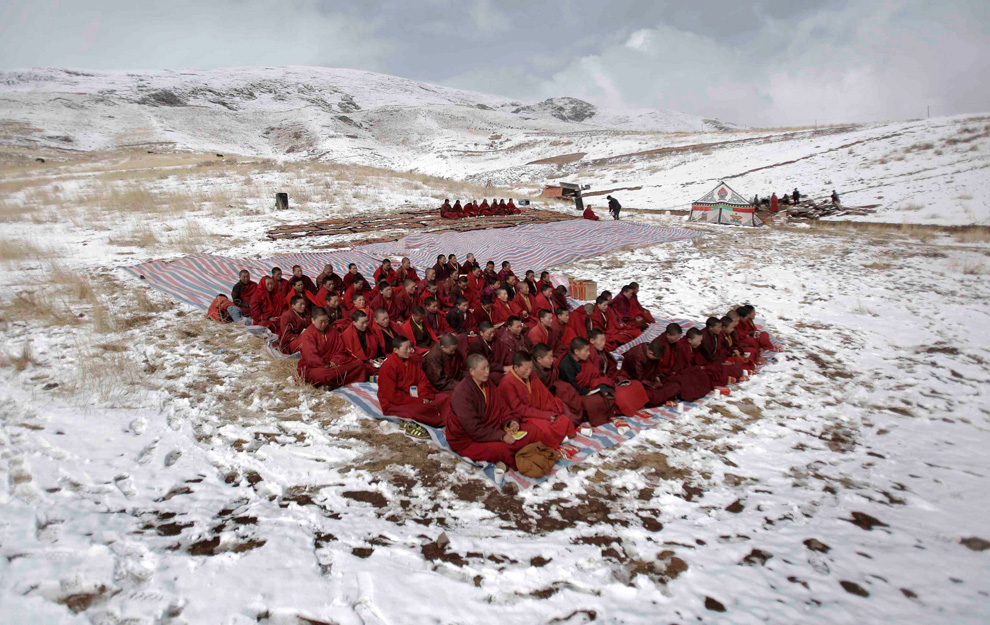

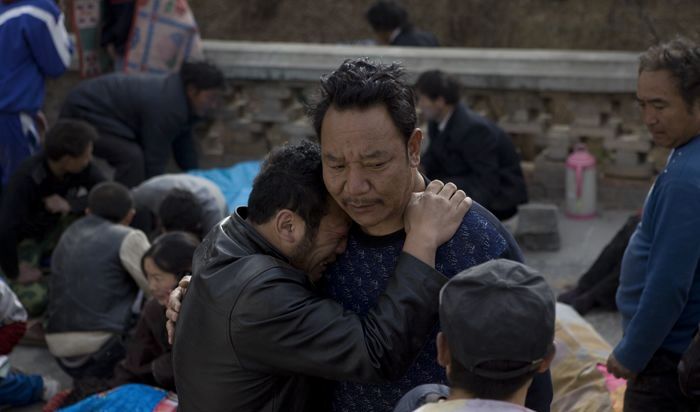
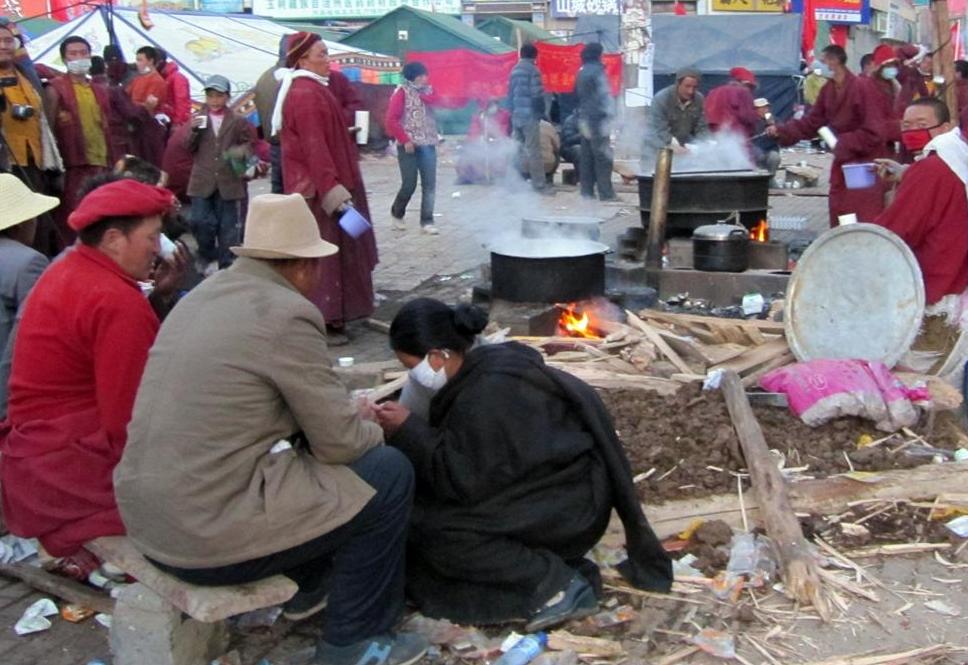
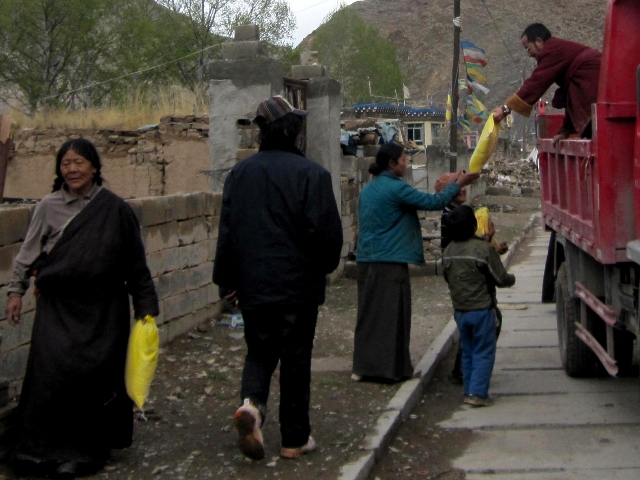
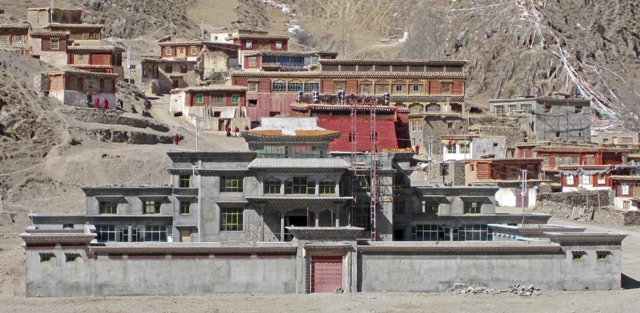
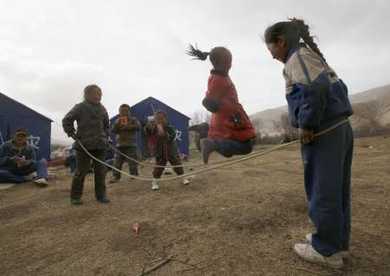
















Jun 8, 2010
Reply
Is it possible the Three Gorges Dam is causing earthquakes in the region?